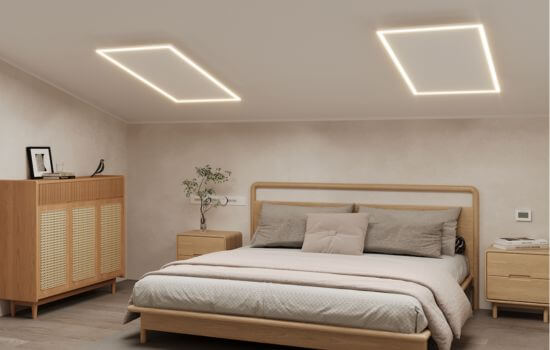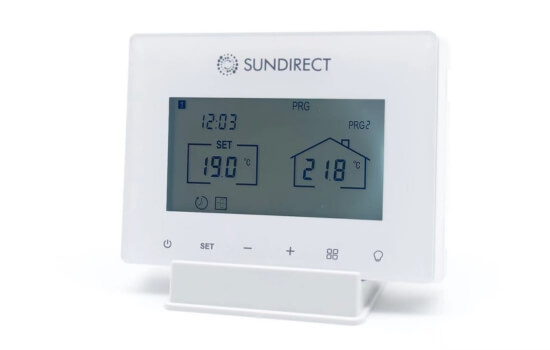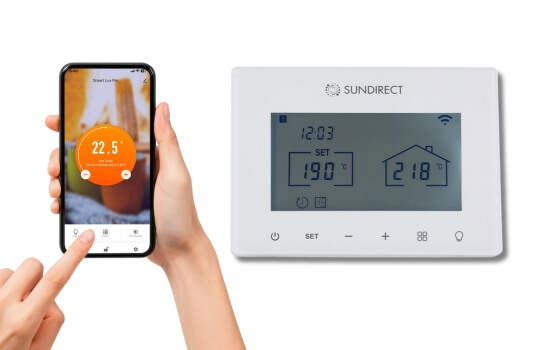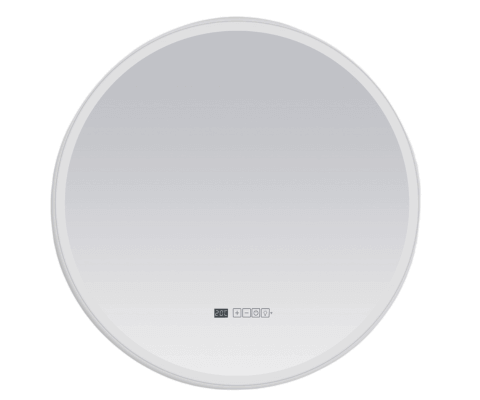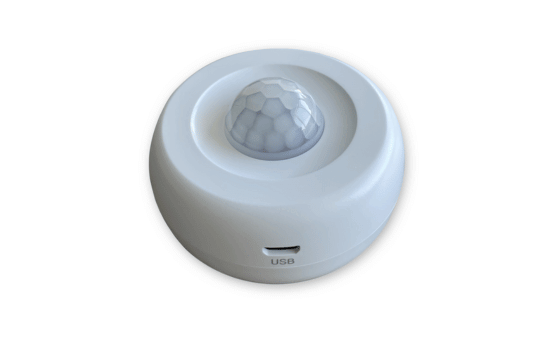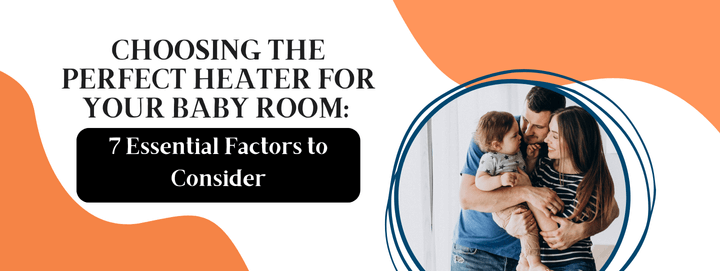Why Heating Matters for Your Baby’s Room
Importance of Maintaining a Comfortable Temperature
Babies are more sensitive to temperature changes than adults. Their bodies have a harder time regulating heat, making them more susceptible to cold or overheating. Proper heating ensures they stay warm and comfortable, reducing the risk of sudden temperature drops that could affect sleep and overall health.
Ideal Temperature Range for Babies
Pediatricians recommend keeping a baby’s room between 68°F and 72°F (20°C – 22°C). This range prevents overheating while keeping the baby warm enough for restful sleep.
Types of Heaters for Baby Rooms
Infrared Heaters
Infrared heaters provide direct, radiant heat without drying out the air. They are a great option because they don’t circulate dust and allergens, making them safer for babies with respiratory sensitivities.
Oil-Filled Radiators
Oil-filled radiators heat slowly but provide long-lasting warmth. Since they don’t have exposed heating elements or fans, they are silent and safe, making them an excellent choice for baby rooms.
Ceramic Heaters
Ceramic heaters warm up quickly and come with overheat protection and tip-over shutoff features. They are an energy-efficient choice, especially in compact nurseries.
Panel Heaters
Wall-mounted panel heaters are space-saving and efficient. They maintain consistent warmth without producing excessive noise, making them ideal for small baby rooms.
Fan Heaters
Fan heaters are affordable and heat up rooms quickly. However, they tend to dry the air and produce noise, making them less ideal for prolonged use in a nursery.
7 Key Factors to Consider When Choosing a Heater
1. Safety Features
Safety is the top priority when choosing a heater for your baby’s room. Look for:
- Tip-over protection – Automatically shuts off if knocked over.
- Overheat protection – Prevents the heater from getting dangerously hot.
- Cool-touch exterior – Ensures the surface doesn’t burn little hands.
2. Energy Efficiency
Energy-efficient heaters reduce electricity costs. Look for models with an Energy Star rating or eco-modes to maintain warmth while saving energy.
3. Noise Levels
A noisy heater can disrupt your baby’s sleep. Choose silent or whisper-quiet heaters, such as oil-filled radiators or infrared models.
4. Temperature Control Options
A heater with adjustable thermostat settings ensures the room stays within the recommended temperature range.
5. Portability and Placement
Consider heaters that are lightweight and can be moved easily to adjust warmth as needed. Wall-mounted heaters can save space in small nurseries.
6. Air Quality and Humidity Impact
Some heaters can dry out the air, leading to nasal congestion and skin dryness. Consider using a humidifier alongside the heater to maintain optimal air quality.
7. Smart Features and Remote Control
Modern heaters come with smart controls, remote access, and programmable timers, making them more convenient for parents.
Best Heater Recommendations for Baby Rooms
| Model | Type | Key Features | Best For |
| Dyson AM09 | Fan Heater | Cool-touch, air multiplier technology, remote control | High-tech, multipurpose use |
| De’Longhi Oil-Filled Radiator | Oil-Filled | Silent operation, energy efficient | All-night heating |
| Lasko Ceramic Heater | Ceramic | Overheat protection, compact size | Budget-friendly option |
Tips for Using a Heater Safely in Your Baby’s Room
- Place the heater away from cribs and curtains.
- Use heaters with automatic shutoff timers.
- Regularly check the heater for dust and maintenance needs.
Alternative Ways to Keep Your Baby’s Room Warm
- Seal windows and doors to prevent cold drafts.
- Dress your baby in warm, breathable layers.
- Use a humidifier to maintain proper moisture levels.
FAQs About Heaters for Baby Rooms
1. Are infrared heaters safe for baby rooms?
Yes, infrared heaters are safe as they don’t circulate dust or allergens and maintain gentle warmth without drying out the air.
2. Can I leave a heater on overnight in my baby’s room?
Only if it has safety features like tip-over protection, an automatic shutoff, and a thermostat-controlled setting to prevent overheating.
3. What is the safest heater for a baby room?
Oil-filled radiators and infrared heaters are the safest options as they don’t expose heating elements or produce dry air.
4. How can I reduce heating costs while keeping my baby warm?
Use an energy-efficient heater, insulate the room properly, and dress your baby in warm clothing.
5. Can a heater make my baby’s skin dry?
Yes, some heaters dry the air. Pairing a heater with a humidifier can help maintain a comfortable moisture level.
6. Is a thermostat necessary for a baby room heater?
Yes, a thermostat prevents overheating and ensures a stable temperature.
Conclusion
Choosing the right heater for your baby’s room involves considering safety, energy efficiency, noise levels, and air quality. By selecting a reliable model with essential features, you can create a warm, safe, and comfortable environment for your baby.

